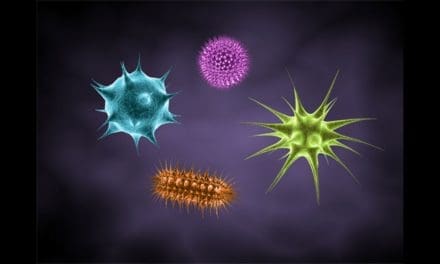UGANDA – Scientists at the National Agricultural Research Organization (NARO) have found that maize, sorghum, and groundnuts in Uganda have aflatoxin concentrations that are 10 times or greater than the safety level advised by the World Health Organization (WHO).
According to Dr. Godfrey Asea, the Director of Research at the National Crops Resources Research Institute (NaCRRI), grains they looked at in various regions of the nation included 100 to 1,000 parts per billion (ppb) more than what was advised, posing a cancer risk to consumers.
Dr. Asea made the revelations while giving a tour of the crop and animal research institutes at Nakyessa on the Gayaza-Zirobwe Road to Agriculture Minister Frank Tumwebaze and his Finance counterpart Matia Kasaija.
They were there to familiarize themselves with the institutes’ operations and creative outputs.
Health officials are worried about the reports of greater concentrations of potentially cancer-causing pollutants in native foods since, for example, maize meals are a staple of millions of Ugandan families’ diets and are becoming common in schools.
The investigation was carried out by government experts in collaboration with the International Institute of Tropical Agriculture to determine the aflatoxin level in the grains from 2007 to 2023. Both the soil and the grains were examined as part of the investigation.
“We got both good and bad fungi. When you have a high concentration of good fungus, it displaces the bad one in a process known as competitive exclusion and this is the principle we used to develop aflasafe,” Dr. Asea said in reference to a biological product used to reduce aflatoxins.
He revealed that the country produces about five million metric tonnes of grain per year and from the research, samples of these grains contain up to 100 parts per billion of aflatoxins, which is higher than the 10ppb recommended by WHO.
Prof Archileo Kaaya, the Head of the Department of Food Technology and Nutrition at Makerere University, said this type of fungi, if present, can grow onto the food, feed on it then produce waste products so when you eat the food, you may suffer food intoxication.
“Aflatoxins are, therefore, a type of toxins that are produced by molds. They are highly toxic and carcinogenic compounds produced by the fungi Aspergillus flavus,” he said.
According to the Professor, not even cooking or roasting the plant produce can kill the toxins since roasting usually happens at 150 degrees Celsius yet aflatoxins can only be destroyed at 400 degrees Celsius.
Kenya banned maize imports from Uganda in 2021 due to the aflatoxin menace.
“It is hard to completely eliminate aflatoxins given the high temperature and humidity as in Uganda and the surrounding countries. But there is a standardized limit, which is 10 ppb for East Africa and that of 4 ppb,” Prof Kaaya said.
Effects of aflatoxin consumption
Produce that is rejected at the export market should be destroyed because it is unsafe for human eating, but because people don’t want to incur losses, they instead sell it to the local populace.
A person can experience acute toxicity if they consume food that contains extremely high amounts of aflatoxins, according to Mr. Amanda Tumwebaze, a Nutritionist at Human Mechanic Physiotherapy Ltd.
125 persons in Kenya reportedly consumed Aspergillus flavus-contaminated maize in 2004, leading to their deaths and hospitalization.
In June 2016, 48 people were hospitalized and 20 people died from acute poisoning after consuming moldy corn in central Tanzania.
The symptoms of poisoning include ascites(the accumulation of fluid in the peritoneal cavity, causing abdominal swelling), vomiting, diarrhea, jaundice, and abdominal pain.
Eating foods containing aflatoxins exposes a person to long-term toxicity, which increases their risk of developing cancer, notably liver cancer, which is the most prevalent type of cancer caused by aflatoxin.
It can also result in stunting in children. According to reports, eating foods containing aflatoxins has stunted the growth of roughly 29% of Ugandan children under the age of five. However, in the Buhweju District, this proportion has increased to 51.
Aflatoxins also deny the body essential nutrients such as zinc, iron, proteins, and some vitamins, thereby lowering its immunity and causing kwashiorkor in children.
“The toxins can also cross the placental barrier in expectant mothers to affect the unborn child. By the time the child is born, it is contaminated with aflatoxins and if the mother keeps eating the same food, her milk will also contain the toxins so the baby’s first 1,000 days are all contaminated,” Prof Kaaya said.
Preventing aflatoxin contamination
According to him, the fungus naturally resides in the ground and grows in the air when the environment is moist.
It is exacerbated by handling since some farmers choose to dry their product on the bare ground which raises the likelihood of mold growth.
Professor Kaaya advised farmers to place their agricultural products on a clean surface, such as a tarpaulin, rather than naked ground, to dry them. They should also make sure that all farm products are dried effectively to the necessary moisture level.
“Also, farmers can use the salt method to ensure their foods are dried to the right moisture content,” he says. Stores should be arranged properly and produce kept in clean sacks.
“Farmers should use stones or wood to prevent the food from being in direct contact with the ground because dried plant produce usually have a high ability to pull water from the surrounding environment,” he further explained.
He also urges farmers to adopt good agricultural practices, starting with the preparation of the soil, the choice of healthy seeds, weeding, the application of the proper fertilizers at the appropriate times, and irrigation, which will aid in the production of crops that are healthy and resistant to mold attacks.
They also need to make sure they grade and sort seeds to separate the healthy grains from any damaged, broken, or shrunken grains that could be polluted. Throw away any that appear to be infected.
For all the latest food safety news from Africa and the World, subscribe to our NEWSLETTER, follow us on Twitter and LinkedIn, like us on Facebook and subscribe to our YouTube channel.








